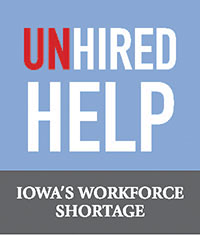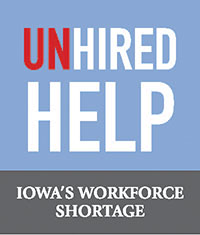
Iowa’s workforce shortage has underscored the need to hire for diversity with a bright red line. Yet, in a state with a population far less diverse than most, that isn’t an easy task. Where do employers find talented minority candidates, and how do they get them to stay?
By Dave DeWitte
[email protected]
 Cultivating a more diverse office may be part of the answer to a growing skills gap for Corridor employers, but it won’t necessarily be easy.
Cultivating a more diverse office may be part of the answer to a growing skills gap for Corridor employers, but it won’t necessarily be easy.
With Iowa’s unemployment rate stuck at 2.4 percent for a year and employers locked in a competition for talent, the ability to recruit and retain candidates from diverse backgrounds can be a make-or-break issue.
Yet racial diversity doesn’t always come easily in Iowa. The state’s population of 3.1 million is 90.7 percent white, in a country that is only 76.5 percent white. The number of Latino and Hispanic minorities in the state has grown in recent years, but they still only account for 6.2 percent of Iowans, versus 18.3 percent of Americans overall. African-Americans and Asian-Americans, meanwhile, account for only 4 percent and 2.7 percent of the state’s population, respectively.
It’s a topic that comes up regularly in media coverage of Iowa’s first-in-the-nation presidential caucuses, if only because the state’s racial balance is so different than the country overall, but one that the state’s employers are beginning to examine as well.
Companies “know the people they sell their products and services to are buying them all over the country,” explained Jennifer Daly, who leads the region’s workforce recruitment efforts as president of ICR Iowa. “Their clients are not like their workforce here.”
Many employers have come to realize that diverse leadership and work teams yield better results. A widely cited study by consultancy McKinsey & Co. in 2015 found that companies in the top 25 percent for ethnic and racial diversity in management were 35 percent more likely to have financial returns above their industry mean, while those in the top 25 percent for gender diversity were 15 percent more likely to beat the industry mean.
Geonetric, which develops websites the health care industry uses to interact with customers, is among those aiming to increase diversity and finding it can be a challenge. The Cedar Rapids-based company is doing better on measures of gender diversity, however.
“There are others where we really struggle, sometimes just getting candidates to the table who represent some different elements of society,” said Chief Strategy Officer and co-owner Ben Dillon. He said the company finds itself actively recruiting for all roles
One major employer that’s made a lot of progress on its diversity journey described the kind of effort it takes at a recent Technology Association of Iowa panel discussion. Sharina Sallis was one of a handful of people of color in a workforce of about 500 at CUNA Mutual Group in Waverly when she joined up in 2005. Now corporate social responsibility manager, she began working to grow diversity in the workforce in 2010.
“We thought, if we just put an ad in the paper, if you needed a job, you’d find it,” Ms. Sallis recalled.
However, the traditional path didn’t move the hiring needle in a diverse direction and CUNA Mutual realized “we had to be very intentional — intentional and purposeful — about going to find that and stop waiting for it to find us.”
Related column: How we talk about diversity is changing, too
Ms. Sallis said CUNA Mutual now seeks out candidates “where they live,” mentioning historically African American colleges, churches, sororities and fraternities as some of the organization’s most fertile recruiting grounds.
Such approaches require a high level of commitment, however.
“It has to start with decision-makers, with leadership… It takes time, investment and money,” said Anthony Arrington of Top Rank Staffing, a new recruiting firm in Cedar Rapids focused on diverse candidates. “Those are big hurdles and I don’t want to talk around it.”
Read the full, members-only feature in the July 29 print or digital editions of the CBJ. Not a member? Join today.




